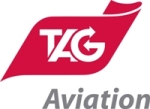
Private aircraft with fewer than 19 seats are not legally required to have trained cabin crew and many yacht crew, as well as nannies and bodyguards, find themselves working onboard their bosses’ private jet without any specific training.
Yacht crew will have covered basic safety and first aid as part of the STCW, but in the context of a private jet, crew also need to know how to evacuate the aircraft on water or on land, and should be aware of firefighting procedures at altitude where fire behaves very differently.
We recently spoke with Debbie Elliott, Training Manager at TAG Global Training, to get her perspective on the synergies and differences from a crew perspective, and to find out about the training courses now available to superyacht crew operating on board private jets.
How did you get involved with the aviation industry?
I have worked in aviation in varying roles over the last 25 years. I started my career with Virgin Atlantic, where I held a myriad of roles during the 17 years I was there, some in the air and some on the ground. I was determined to work for TAG after leaving Virgin, as the private jet industry was definitely the pinnacle of my career.
When did you join TAG Aviation and how did it come about?
I joined TAG Aviation six years ago as part of a strategic overhaul of the business focus. I was tenacious in applying for any job that came up until finally the right one did, and in the last six years I have worked hard to enhance our brand in all areas that touch the world of the Ultra High Net Worth (UHNW). My team is amazing and supports my many controversial ideas for training.
There are clear parallels between the business of private aviation and the superyacht industry in terms of charter, management and training – but what are the similarities for crew on the front line?
There are undoubtedly similar pressures for the front line crew, ranging from demands of owners, time pressure, commercial pressures and knowing that the UHNWI’s are a less than forgiving employer. Working for the UHNW is not a 9-5 job and the people who strive hard to meet the needs of these clients are real service professionals. That is why training is so important, not only to maintain standards but to keep a team engaged so they feel invested in and listed to.

Which skills can superyacht crew learn from the aviation industry and vice versa?
The landscape of training is changing and we are seeing a number of superyacht owners who also have aircraft and expect their yacht crew to operate on both. As the law currently states, an aircraft with less than 19 seats does not need to have trained cabin crew, so it is their prerogative, if they wish, to have one of their yacht crew onboard.
TAG Global Training has therefore devised a half day course that gives yacht crew some top tips for dealing with an emergency onboard an aircraft. If there was a fire onboard, a landing on water or a pilot was incapacitated, they would have the skills to be able to help the principal and their family to safety.
What does Crew Resource Management entail in private aviation?
Crew Resource Management (CRM) training has been in aviation for some 40 years and is always evolving. These courses underpin the safety culture in aviation and are delivered throughout the hierarchy of an organisation.
In our training centre, pilots and cabin crew have the opportunity to discuss freely and confidentially the challenges of this type of operation and how sometimes, in moments of stress or high workload, these pressures may have resulted in an incident. Some of the owner demands we hear in these sessions are so outrageous you would think they were made up! However with improved self-awareness, team work, communication and, above all, following their Standard Operating Procedures (SOPs) fewer accidents/ incidents occur, although they still happen as we have seen in both industries recently.
Crew Resource Management (CRM), sometimes referred to as ‘human factors’, is a mandatory course for pilots and cabin crew at all levels. This course is now available to superyacht crew and covers topics such as situational awareness, decision making and the importance of teamwork in avoiding human error.

Avoiding mistakes is obviously very important but, when things do go wrong, is there a more positive attitude to incident reporting compared with yachting?
With reference to the superyacht industry, 40 years ago incident reporting in commercial aviation was the same. We then saw a significant cultural shift following a high profile incident in 1977. Two fully loaded Boeing 747s collided on the runway on the island of Tenerife in the Canaries, killing 583 of the 644 passengers on board. As with many accidents, a series of mistakes typically converges and there is much to be learned in the aftermath. This particular accident has been widely documented and is also the subject of a book called ‘Cockpit Confidential’ by Patrick Smith.
Nowadays things are very different and the aviation industry is signed up to the belief that reporting isn’t bad; reporting makes us safer.
With recent world events, security awareness training and private security are in growing demand in the superyacht industry – have you seen a similar trend in private aviation?
Yes indeed, we have close protection officers in for training too, they often travel alone with the principal on the jet, and they want to feel confident, in the event of an emergency, that they could protect them and evacuate the aircraft. The threat is real and the desire to harm the UHNWI or their family is reported all too often. The industry is responding to this, and security training has been ramped up over the years.
What is the most important thing you’ve learned in your role so far?
That the needs of the UHNW are so unique you can’t train for every event, and there are times when things will happen that are outside your control. Above all else, keep your integrity intact as this privileged world is very close knit. Only your reputation will make you stand above others when it seems the rest of the world has the same skills or product offering as you.
More generally, what are the principal challenges in private aviation today?
From the 26th August 2016 we saw a change in legislation for aircraft that are privately operated and not affiliated with a company holding an Air Operators Certificate (AOC).This will affect some of the training requirements for pilots and cabin crew, as well as the owner’s responsibility for the compliance of their aircraft. This is a big change for a number of private aircraft operators and at TAG we have a solution for a number of our clients.
Who do you most admire in the world of business, who has inspired or influenced you?
I was fortunate enough in my formative years to work with a Linda Moir, a Director at Virgin Atlantic, who I looked up to and respected during my time working for her. I am very proud to say Linda is now my external work mentor for which I am eternally grateful. Linda has since gone on to run her own successful company showing other large organisations how to inspire and lead a team with customer experience at the core. If you intend to work with the UHNW, the customer experience and never saying ‘no’ has to be your mantra.

Which is your favourite aircraft and why?
I started flying on the very first generation of Boeing 747s so that aircraft will always be close to my heart, and when it finally goes off to the Mojave Desert that will be a sad day. However, in the world of private aviation, I get very excited about seeing a Gulfstream aircraft. It is the epitome of style and comfort, with the Global Express a very close second!
About TAG Global Training
A leading provider of training within aviation, TAG Global Training was established in 2007 to facilitate the training of both pilots and cabin crew. Due to increasing demand and overwhelming success, the training facility now also delivers additional courses for many operators’ personnel. All TAG training courses are EASA and DFT compliant and are held at the internationally renowned training facility located at Farnborough Airport.
The centre has an unrivalled reputation for training excellence for both corporate and commercial jet personnel and offers the very latest courses and teaching facilities enabling courses to be completed at one easily-accessible location.


Post your comment
You cannot post comments until you have logged in.
Login to post a commentComments
No one has commented on this page yet.
RSS feed for comments on this page | RSS feed for all comments